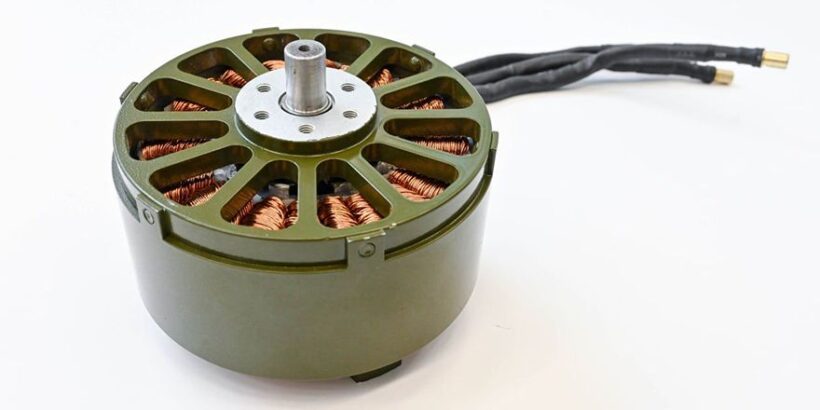At the Moscow Aviation Institute (MAI), flight tests have been completed on a new electric motor for unmanned aerial vehicles (UAVs) weighing over 30 kg. The design is suitable for both helicopter-type and fixed-wing UAVs. With minor modifications, it can be adapted for ground and surface systems, according to the MAI press office.
The motor is made almost entirely of Russian materials. It was developed as part of the “Priority 2030” programme, with the participation of specialists from MAI’s Advanced Engineering School. Its key advantage is its versatility. Currently, Russia lacks mass-produced solutions for heavy drones; similar electric motors have to be purchased from abroad.
Currently in Russia, similar solutions are being developed for niche applications and specific clients. There are no off-the-shelf products on the domestic market. MAI engineers have proposed a universal version that can be used in drones weighing up to 120 kg. Similar products are manufactured in China, but the Russian design, according to the developers, is more efficient in operation. Weighing 2.5 kg, the motor delivers up to 16 kW of power. This is 10% higher than foreign competitors.
The tests were conducted in two phases. “The first phase was carried out on specialised test benches for testing propeller-motor groups of unmanned aerial vehicles in laboratory No. 2 of the Advanced Engineering School. These tests make it possible to assess the level of thrust, current consumption, motor temperature and controller temperature. The second phase of testing took place at the university’s airfield in Alferyevo. MAI has a fully-fledged aviation base there with its own airspace,” commented the press office.
There is already a customer for UAVs using the new motor. Serial production is scheduled to begin before the end of the current year. Further work on developing the electric motor includes reducing production costs, integration with the control system and the application of 3D printing for the manufacture of parts.
MAI’s development opens up new opportunities for unmanned aviation and related industries. Increased power and adaptability make it promising for commercial applications.


